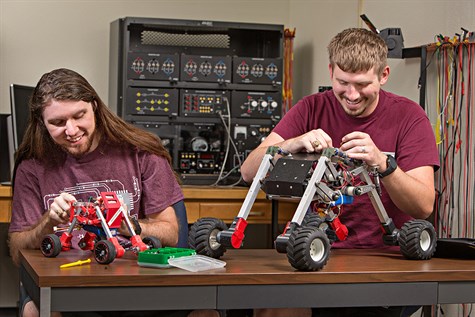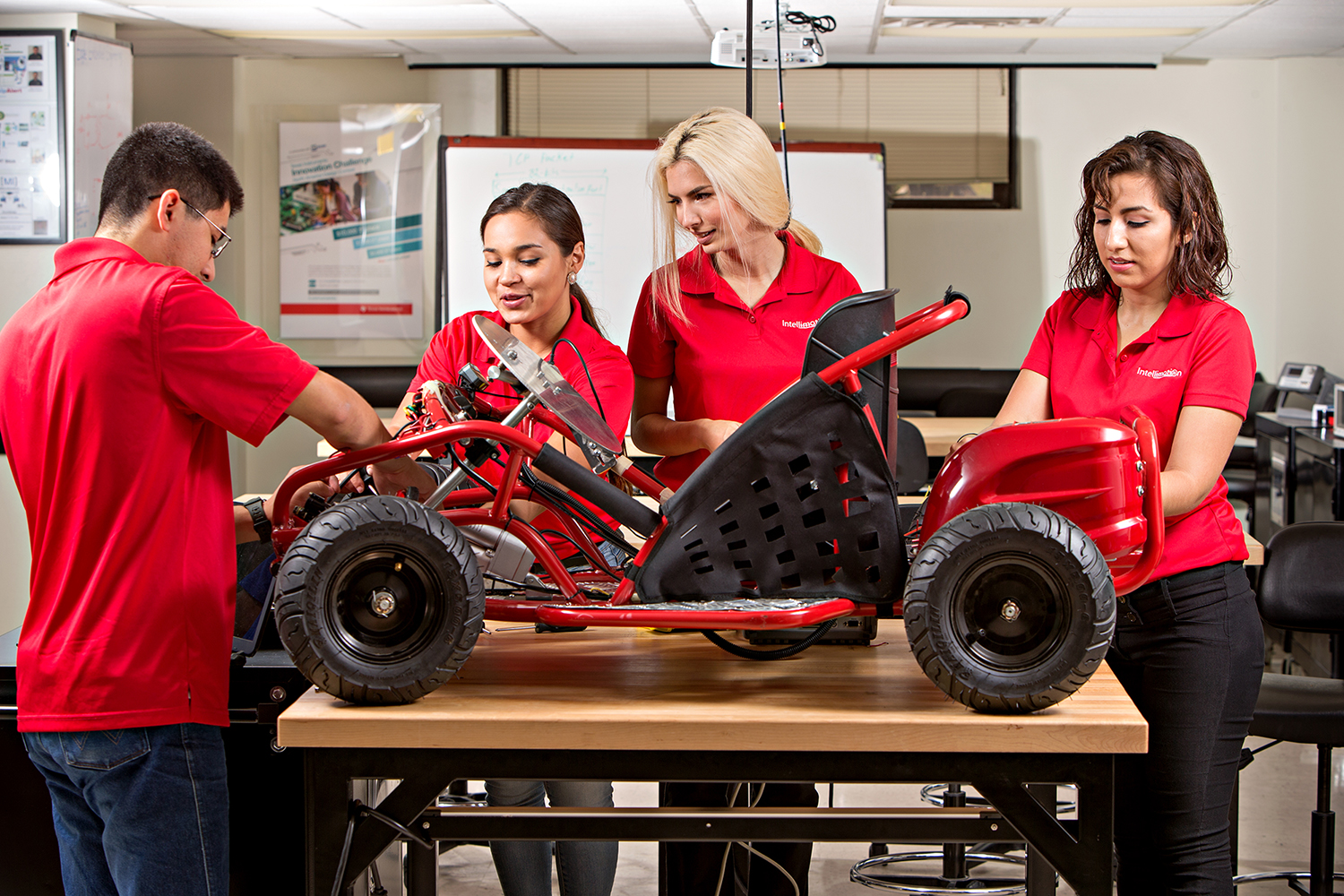When you think of the future, what do you see?
Self-driving cars, objects that ‘talk’ to one another via the internet or maybe high-functioning robots?
No matter what you picture, the future of technology will certainly be coming from one field in particular — mechatronics. This union of electrical and mechanical engineering technology will bring the Internet of Things to life; it is now an undergraduate program at Texas A&M University.
The Department of Engineering Technology and Industrial Distribution (ETID) is excited to offer a new Multidisciplinary Engineering Technology (MXET) degree with an emphasis in mechatronics, the first of its kind in the state of Texas.
The new mechatronics program is the vision of ETID Department Head, Dr. Reza Langari, who knows first-hand the value and need for such a program at Texas A&M.
“There are two major factors involved,” said Langari. “One, there is continued interest in the job market for graduates who have interdisciplinary skills in mechanical design, electronics and software to develop more comprehensive, integrative products. Two, we are looking at expanding beyond Texas A&M in College Station; there is demand for a broad-based engineering technology degree at branch campuses and community colleges. We developed a program with the intent to serve both purposes.”
Built on two ABET accredited programs, electronic systems engineering technology (ESET) and manufacturing and mechanical engineering technology (MMET), MXET emphasizes technical areas identified through industry and faculty collaboration.

The 127-hour curriculum combines a comprehensive range of hands-on disciplines including mechanical, electrical, communications, control and computer systems.
To get a better scope of what this means for students, MXET Program Coordinator Dr. Joseph Morgan shared the feedback he has received from industry professionals.
“There’s a tremendous interest and support from the private sector … aerospace, automotive, oil and gas, medical are all talking about mechatronics,” said Morgan.”
Instead of needing to hire both an electrical and mechanical engineer, companies will have the option to bring on an MXET graduate who has a general understanding of both disciplines.
“National Instruments and other companies have shown strong interest in [MXET] – they are supporting it,” said Morgan. “Students are drawn as well because it provides a set of skills that are very marketable.”
After gaining a fundamental understanding of mechanical and electrical engineering from ESET and MMET curricula, students will take MXET-specific courses uniting both disciplines, as well as capstone classes tackling real-world problems.
Students will use LabVIEW software and National Instruments’ Real-Time Input-Output (NI RIO) technology for hands-on learning in the mechatronics courses. Thanks to ETID’s relationship with National Instruments, students will utilize NI’s commercial-grade myRIO and cRIO devices for MXET I and II, respectively.
“Students will gain experience with real industrial hardware and be able to transport their knowledge of LabVIEW so they can hit the ground running upon graduation,” said Morgan. “They will already know what the real world is like in mobile and manufacturing robotics.
According to the latest long-term employment projections, MXET graduates will not have a problem finding a high-paying job after finishing school:
USA Engineering Employment Growth Outlook 2012-2022
|
Occupation |
Growth |
Annual |
Number of jobs |
|
Mechanical Engineers (BS) |
5% |
$80,580 |
269,700 |
|
Electrical & Electronics Engineers (BS) |
4% |
$89,630 |
318,700 |
|
Software Developers |
22% |
$93,350 |
1,240,600 |
Texas Long-Term Employment Projections (2012-2022)
|
Occupation |
Growth |
Annual |
Annual Average |
|
Electrical Engineers |
20.8% |
$101,126 |
580 |
| Electronics Engineers, Ex. Computer |
22.2% |
$100,002 |
485 |
|
Mechanical Engineers |
20.0% |
$99,073 |
990 |
|
Software Developer, Applications |
25.1% |
$97,035 |
1,540 |
Since MXET combines multiple engineering disciplines, graduates will be uniquely qualified for a myriad of lucrative careers upon graduation.
Mechatronics is the only emphasis for MXET at the moment, but more options are planned for the future. This framework will allow ETID to offer unique multidisciplinary engineering degrees catered specifically to student, industry and job demands.
For more information on the MXET program, contact Morgan, jmorgan@tamu.edu, 979-575-0128.
